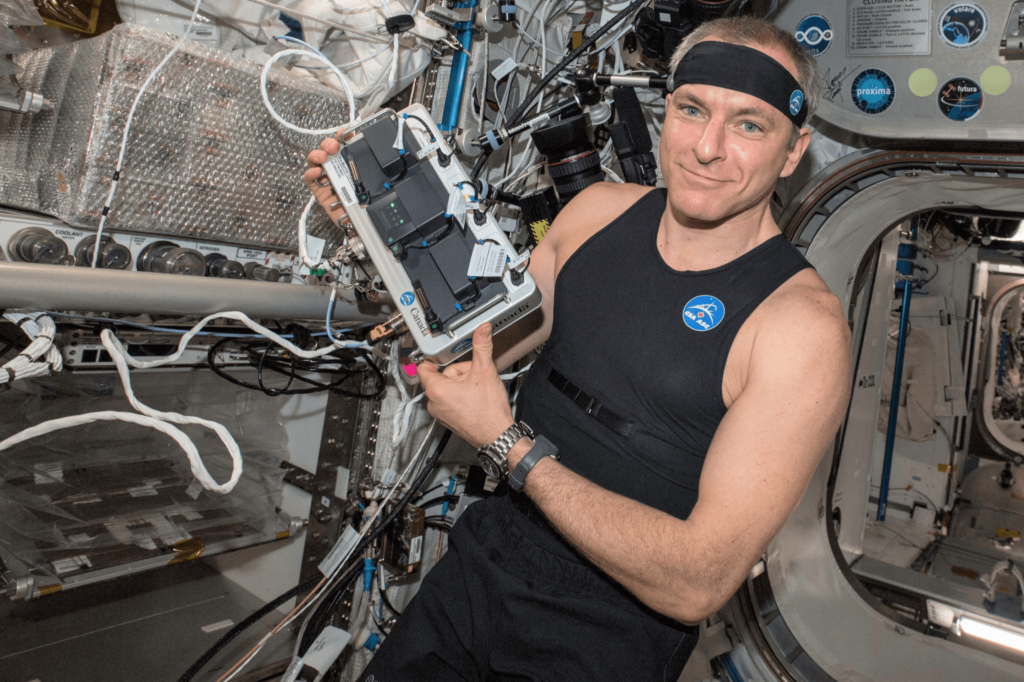As NASA prepares to send astronauts back to the Moon and eventually to Mars through the Artemis program, understanding how the human body adapts to the extreme conditions of space is more crucial than ever.
To better equip astronauts for these extended missions, scientists are conducting an array of studies under a comprehensive research initiative known as the Complement of Integrated Protocols for Human Exploration Research (NASA’s CIPHER). This groundbreaking research aims to unravel the complex ways in which space travel affects the human body over time.
The NASA’S CIPHER Initiative: A Holistic Approach to Spaceflight Research
NASA’s CIPHER represents a pioneering effort to integrate multiple physiological and psychological studies, offering a complete view of how the human body responds to the challenges of space. “CIPHER is the first study to synthesize various measures, enabling us to evaluate the full scope of human adaptation to prolonged space missions,” says Cherie Oubre, the project’s lead scientist.

As more astronauts venture into space through Artemis and other programs, CIPHER aims to provide critical insights into how the body’s systems—such as the heart, muscles, bones, and eyes—adapt to long-term spaceflight.
Research Focus Areas: Unpacking the Human Response to Space
CIPHER encompasses 14 distinct studies sponsored by NASA and international partners, with research spanning three mission lengths: short (under 3.5 months), standard (3.5 to 8 months), and extended (over 8 months). This research aims to monitor astronauts’ health before, during, and after their missions, focusing on the following key areas:
Bone and Joint Health
Spaceflight accelerates bone density loss and muscle degradation, raising concerns about how these changes impact skeletal support and overall health during and after missions.

NASA’S CIPHER scientists will monitor bone density, skeletal health, and muscle quality through regular scans and periodic blood and urine tests to understand the long-term effects of space travel on the body.
Brain and Behavior
The brain’s response to the low-gravity environment of space can lead to structural changes that affect spatial cognition and crew performance. Through cognitive tests, MRI scans, and virtual reality tasks, CIPHER aims to explore how space travel alters brain function and how these changes impact operational abilities.
Cardiovascular Health
Extended space missions may stiffen arteries and increase the risk of heart disease. CIPHER research will use imaging techniques and wearable technology to track cardiovascular health, seeking to understand how spaceflight affects the heart and surrounding organs over time.
Exercise and Physical Fitness
Exercise is essential for counteracting the muscle and bone loss experienced in space. CIPHER studies will evaluate the effectiveness of exercise regimens in maintaining astronaut health during long missions, tracking muscle strength, nutrition, and sleep habits to ensure astronauts are mission-ready upon returning to Earth.
Sensorimotor Function
Astronauts often experience dizziness and disorientation when adapting to new gravitational environments. CIPHER research will examine how long it takes to adjust to different gravity levels and identify factors that influence balance and coordination, critical for future Mars missions where immediate ground support will be unavailable.

Vision and Eye Health
Low-gravity conditions can alter the structure of the eyes and brain, potentially affecting vision. Through MRI and eye imaging scans, CIPHER seeks to understand how these changes impact astronauts’ ability to process visual information during extended space missions.
Biomarkers and Overall Health
Blood and urine samples from astronauts will provide valuable data on how spaceflight impacts overall health, including stress levels, immune function, and the potential for cardiovascular disease.
CIPHER scientists will also explore the relationship between mission duration and DNA changes, such as telomere length, which may have implications for aging and post-mission recovery.
Integrated Insights: A New Understanding of Spaceflight’s Impact
NASA’s CIPHER is more than just a collection of studies; it is a holistic approach that integrates data across multiple research areas to uncover patterns in how the human body adapts to space.
This integrated analysis will help answer critical questions: Do changes in one body system predict changes in another? Do these changes stabilize after a certain period in space? The answers could be key to ensuring astronauts remain healthy as they explore the Moon, Mars, and beyond.

“CIPHER is an all-encompassing, total-body approach to learning how humans adapt to spaceflight,” says Oubre. “Insights gained through CIPHER may well be key to enabling humans to remain healthy while exploring the Moon, Mars, and beyond.”
As NASA leads the charge back to the Moon with the Artemis missions, the lessons learned through CIPHER will be indispensable in preparing astronauts for the challenges of long-duration space exploration.
The CIPHER initiative, along with NASA’s broader Human Research Program, is paving the way for safe, sustainable human space travel, ensuring that astronauts are not only mission-ready but also healthy as they embark on humanity’s next great adventure.
For further information, let’s dive into our site: Galaxysecret
Source:








